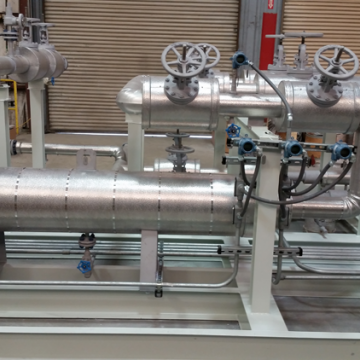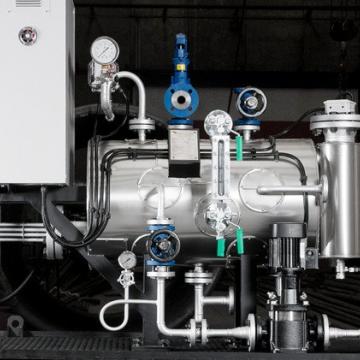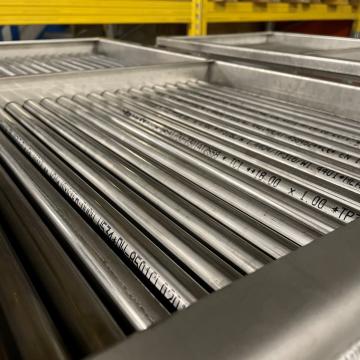Electric Thermal Oil Heaters
Industries relying on high-temperature heat for critical processes face multiple challenges: inefficient fuel consumption, unreliable temperature control, and increasingly strict environmental regulations.
Electron's electric thermal oil heaters offer a superior solution by delivering consistent, high-temperature heat without the complexities of high-pressure steam systems.
Our advanced thermic fluid heaters combine precise temperature control with minimal maintenance requirements, ensuring reliable performance while significantly reducing operational costs. This innovative technology supports both sustainability goals and operational excellence, making it the ideal choice for industries looking to optimize their heating processes.
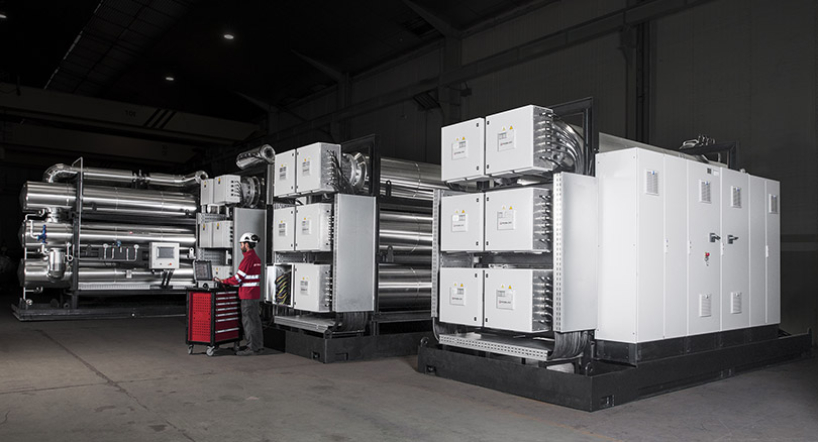
Fossil fuel free operation
Industrial thermal oil heaters are highly energy-efficient due to their closed-loop design.
Compared to conventional steam systems, these heaters can reduce fuel consumption by up to 20%, which directly lowers CO₂ emissions.
This makes them a sustainable solution for industries with significant heat demands.
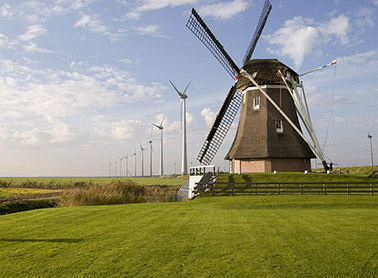
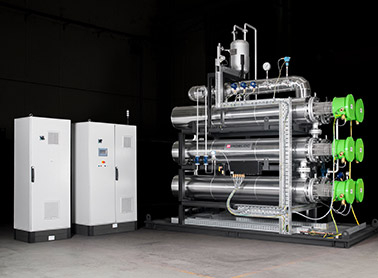
Reliable temperature control for critical processes
Electron’s thermal fluid heaters provide precise, stable temperature regulation up to 400°C without significant fluctuations.
This makes them ideal for industries such as chemical manufacturing, food processing and heat recovery, where consistent heat is vital for product quality and safety. It can even be used for heat recovery in several industries.
Their efficiency ensures consistent production processes, optimizing both energy use and operational reliability.
Industrial electric oil heaters
Our electric thermal oil heaters are delivered as complete skid-mounted systems, designed for optimal energy efficiency and safety. Each skid is tailored to meet rigorous industrial demands, operating within a power range of 25kW to 15,000kW and offering flexibility in both horizontal and vertical configurations.
With a maximum working temperature of 350°C and a service temperature reaching up to 400°C, they ensure reliable heat transfer.
These heaters support working pressures of 7 bar, with a test pressure of 14 bar, and comply fully with CE Marking and AD-2000 design codes, ensuring safety and high performance.
Custom-made thermal heaters
Electron's custom-designed thermal oil heaters are engineered to meet the specific operational requirements of various industries. These electric systems provide versatile heating solutions, ensuring high efficiency and safety.
Our heaters can be tailored for ATEX-compliant applications in hazardous environments, ensuring adherence to stringent safety standards.
This customization enhances operational efficiency and ensures seamless integration with existing systems, optimizing performance across diverse industrial applications for long-term reliability and safety.

Highly-efficient electric thermic fluid heaters with high temperature uniformity
Electron - Experts in Thermal Process Installations & Electric Heating Systems

Electron industrial thermal oil heaters
Customer-centric solutions
At Electron, we understand that every industrial application has unique requirements. That’s why we offer custom-made thermic oil heaters to meet specific operational requirements, providing long-term efficiency and safety.
Options:
- Temperatures up to 400º C
- Fire prevention inlet for N2 or steam
- Remote assistance
- ATEX execution
- Customized executions
- PLC Control
- Reduced thermal charge
- Other fluids than thermal oil possible
- Skid on platform with retention system
- Solid State Relay (SSD) for optimal power control
Thermal oil boiler specifications
- Power range: 25 – 15,000kW
- Output range: 10.000 - 5.000.000 kcal/h
- Energy efficiency: 100%
- Voltage: 400 / 680V (fossil fuel free)
- Heat transfer: oil, thermal fluid
- Working pressure: 7 bar
- Test pressure (PT): 14 bar
- Admissible maximum pressure (PS): 40bar
- Service maximum pressure (PMS): 25 bar
- Max. working temperature: 350°C
- Design temperature: 400°C
- Multiple heating stages
- CE-Certified
- Design code: ASME VIII, Div 1, EN 13445, AD 2000
- Execution: horizontal or vertical
- Low specific charge: 3 W/cm2
Applications & Industries
Thermal heaters are particularly popular in industries with critical processes. Electron’s high-quality thermal oil heaters are mainly used in the chemical and food industry, delivering consistent, high-temperature heat with maximum fuel efficiency.
Chemical manufacturing
Thermal oil heaters play a vital role in chemical manufacturing, delivering precise temperature control for distillation, polymerization and reaction processes.
Electron's thermal fluid systems ensure optimal heat transfer in reactors and presses, where consistent temperatures are crucial for product quality. These systems streamline complex operations while enhancing productivity and energy efficiency, making them indispensable for modern chemical manufacturing facilities.
Food processing
In the food processing industry, thermal oil heaters are vital for indirect heating in processes like frying, baking, and in drying processes for oils, fats, and greases.
They ensure steady, high-quality heat that is vital for maintaining food safety and product consistency. As a result, thermal oil heaters support efficient operations, enabling food processors to meet high production demands.
Heat recovery
Thermal oil systems excel in heat recovery, offering superior performance compared to water-based solutions thanks to their higher temperature capabilities and better thermal conductivity.
When combined with heat exchangers, these systems can significantly reduce energy costs in production facilities. The recovered heat can be stored in secondary loops or directly utilized in various production processes, from hot air applications to screw conveyor systems, maximizing energy efficiency across operations.
Electron: more than high-quality thermal oil heaters
We have extensive experience in designing and manufacturing custom electric heating elements and systems, furnace accessories, and insulation materials. We provide customized thermal fluid heaters and focus on usability and innovation. Want to know more? Our experts will be happy to advise you on the best solution for your needs.
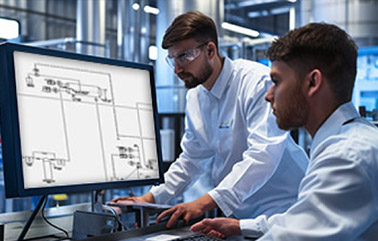
Electric thermal oil heaters for consistent process heating

